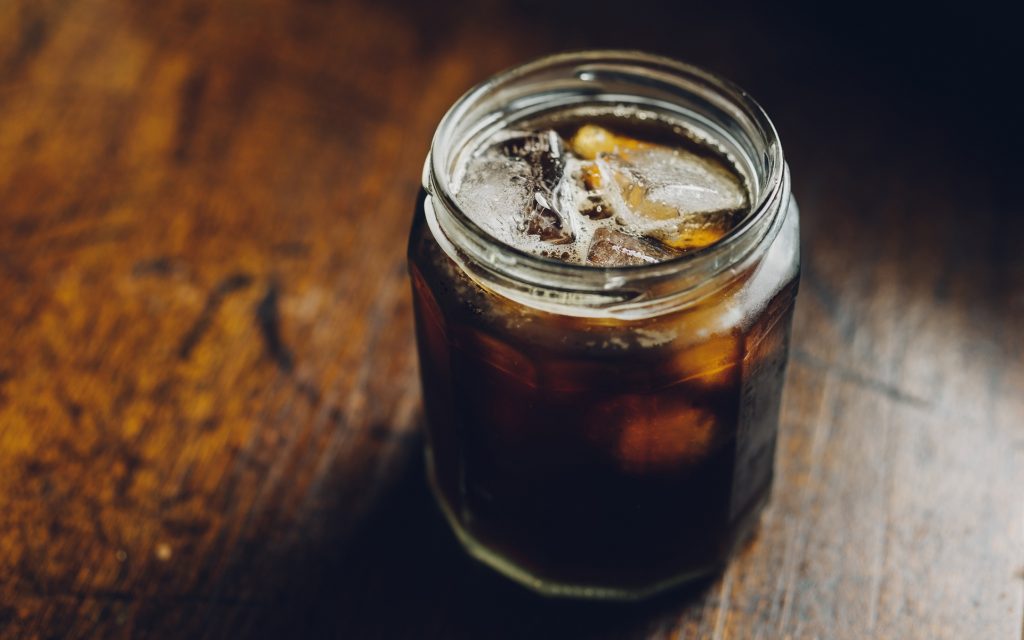Coffee beans first burst and second burst time shallow baked Yega Xuefei coffee beans moderately roasted Brazilian coffee beans

Professional coffee knowledge exchange more coffee bean information please follow the coffee workshop (Wechat official account cafe_style)
They are all coffee beans, but there are differences. Some are more mature, softer and expansive, while others are immature, with more water content and poor malleability.
In addition, keep in mind that there are both beans that explode and expand first, as well as beans that are generally heat permeable and bitter before they burst in minutes.
Basically, coffee roasting is a kind of high-temperature coking (Pyrolysis), which completely changes the substances inside the raw beans, produces new compounds, and recombines to form aroma and mellow flavor. This effect only happens at high temperature. If only low temperature is used, it cannot cause decomposition. No matter how long it is baked, the beans cannot be cooked.
Most people think that baking is nothing, just frying the raw beans with fire. In fact, in the process of coffee processing, roasting is the most rare step, it is a kind of science, but also a kind of art, so in Europe and the United States, experienced bakers enjoy a highly respected status. Baking can be roughly divided into the following three stages:
1. Drying: in the early stage of baking, raw beans begin to absorb heat, and the water inside gradually evaporates. At this time, the color gradually changed from turquoise to yellow or light brown, and the silver film began to fall off, and a touch of grass green could be smelled. The main function of this stage is to remove moisture, which accounts for about half of the baking time. Because of who is a good heat transfer conductor, it helps to cook the internal substance of the coffee. Therefore, although there is no purpose to remove water, the baker will make good use of the temperature of the water and properly control it so that it will not evaporate too quickly; in general, it is best to control the water to reach the boiling point in 10 minutes and turn it into steam, when the internal material is fully cooked and the water begins to evaporate, rushing out of the outside of the coffee beans.
two。 High temperature decomposition: baked to about 160 degrees, the water inside the beans will evaporate into gas and begin to rush out of the outside of the coffee beans. Then it rushes out of the outside of the coffee beans. At this time, the interior of raw beans changed from endothermic (Endothermic) to exothermic (Exdothermic), and the first burst sound (Crack) appeared. After the bursting sound, it will turn to endothermic, at this time, the pressure inside the coffee bean is very high, up to 25 atmospheric pressure. High temperature and pressure begin to deconstruct the original tissue to form new compounds that create the taste and taste of coffee; at about 190 degrees, the transition between endothermic and exothermic occurs again.
3. Oueenching: after the coffee is roasted, it must be cooled immediately, and the high temperature cracking should be stopped quickly to lock the flavor. Otherwise, the high temperature in the beans will continue to take effect and will burn off the aromatic substances. There are two cooling methods, one is air-conditioned and the other is water-cooled. The air-cooled type needs a lot of cold air to cool the coffee beans quickly within 3 minutes to 5 minutes. In the field of professional baking, large roasters are equipped with a tray with a rotatable push arm (Agitator); when the baking is completed, the beans are automatically fed into the tray, and the fan in the tray is immediately activated, blowing cold air, and the pushing arm stirs the coffee beans to cool them. Although the air-cooled type is slow, it is clean and does not pollute, so it can retain the aroma of coffee and is used by selected coffee industry. The amount of water sprayed is very important, requires precise calculation and control, and increases the weight of baked beans, which is generally used in large-scale commercial baking.
Important Notice :
前街咖啡 FrontStreet Coffee has moved to new addredd:
FrontStreet Coffee Address: 315,Donghua East Road,GuangZhou
Tel:020 38364473
- Prev

Coffee explosion time Why coffee beans burst is not obvious how long does it take for coffee beans to explode
Professional coffee knowledge exchange more coffee bean information please follow the coffee workshop (Wechat official account cafe_style) We will learn about coffee roasting process return temperature point to an explosion, coffee beans will go through. Baking is a process of heating beans. Unbaked raw beans smell only a little grassy and slightly fruity, but taste almost meaningless. Baking
- Next

Strong and mellow coffee | what do people often mean by the strong and mellow body feeling of coffee?
Professional coffee knowledge exchange more coffee bean information Please follow the coffee workshop (Wechat official account cafe_style) people always like to use mellow, sweet to describe the beauty of a cup of coffee, however, what is strong? What is alcohol? What's the difference? Coffee contains gum, which can be felt in Chuanqi and okra.
Related
- Beginners will see the "Coffee pull flower" guide!
- What is the difference between ice blog purified milk and ordinary milk coffee?
- Why is the Philippines the largest producer of crops in Liberia?
- For coffee extraction, should the fine powder be retained?
- How does extracted espresso fill pressed powder? How much strength does it take to press the powder?
- How to make jasmine cold extract coffee? Is the jasmine + latte good?
- Will this little toy really make the coffee taste better? How does Lily Drip affect coffee extraction?
- Will the action of slapping the filter cup also affect coffee extraction?
- What's the difference between powder-to-water ratio and powder-to-liquid ratio?
- What is the Ethiopian local species? What does it have to do with Heirloom native species?

